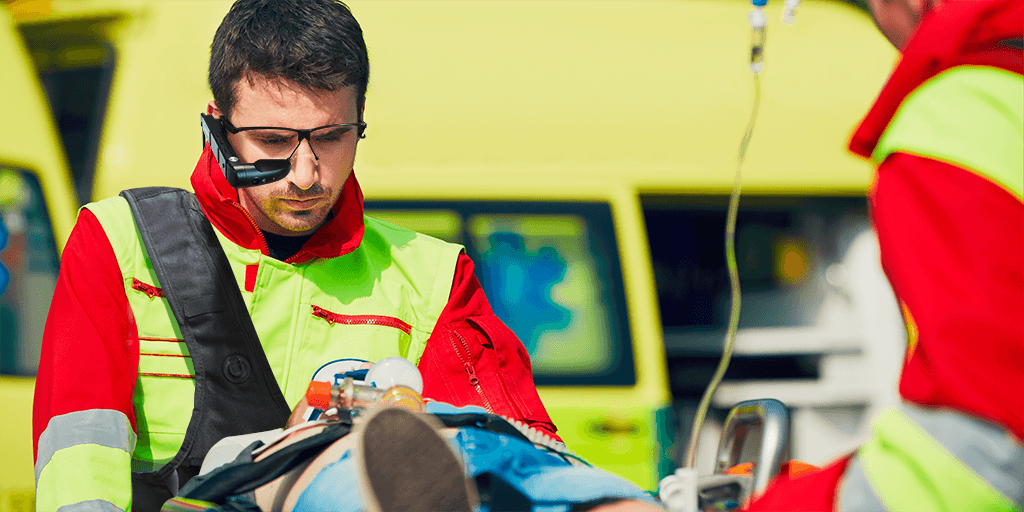The purpose of this use case is to offer a deeper understanding of how 5G will improve emergency care, by facilitating and speeding up the communication between caregivers in the ambulance and the EMD, remote experts, and emergency department staff.
The common goal is to save more patients’ lives than before and to improve the outcome for them in the short and long-term, as well as their well-being. Another objective is to reduce the stress and workload for all care providers, as well as to improve their efficiency. Finally, the hope is that these improvements will reduce the overall cost of care in the short and long term, by allowing patients to recover quicker.

A precise diagnosis of a life-threatening situation is essential to provide patients with the necessary lifesaving treatment, as quickly as possible: for example, draining fluids from the pericardium in case of cardiac tamponade, or directly starting the treatment of critically ill patients to help reduce irreversible health damage (like starting anti-coagulant medication treatment ASAP to save heart muscle in case of myocardial infarction).
Ultrasound is a highly versatile diagnostic tool in these cases, enabling rapid and quantitative examination of a variety of organs, including the heart and lungs, plus the abdomen. The major drawback is that correctly positioning an ultrasound probe is difficult, but crucial to get good quality images, easily understandable to give a correct diagnosis. Therefore, the use of ultrasound is limited, without an expert doing probe handling and image interpretation. However, if a less trained ambulance doctor is guided by a remote expert, fast and accurate diagnosis and intervention support are possible.
Current mobile network technologies do not provide sufficient coverage, allow low latency communication, and are not reliable enough for this application. Soon, network performance KPIs should be guaranteed at all times in case of an emergency, even in crowded spaces with network saturation, for example in football stadiums.
However, it is expected that 5G technology will provide the main differentiating network KPIs to enable remote collaboration scenarios between care providers, for instance when an expert guides a remote doctor or paramedic in performing an ultrasound exam or ultrasound-guided intervention. A guaranteed Quality of Service (QoS) level is of key importance in this case, which 5G network slicing technology can provide.
First experiments have already been performed at Rennes University Hospital (France) with the Philips Lumify-Reacts portable ultrasound solution and the XpertEye software solution for smart glasses provided by AMA.
AMA was recently awarded the “Key Innovator” label by the European Commission’s Innovation Radar for the use case “Teleguidance for diagnostics and intervention support to improve medical emergency care” within the 5G-TOURS European project.
Source: the 5G-TOURS Newsletter Second Edition, April 27, 2021, https://5gtours.eu/the-second-edition-of-the-5g-tours-newsletter/

